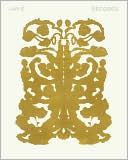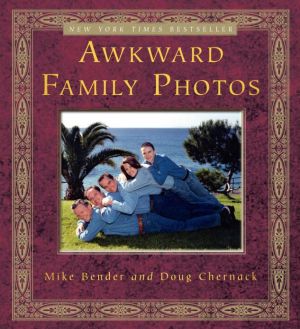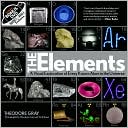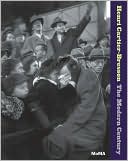Picture Perfect: Life in the Age of the Photo Op (New Edition)
We say the camera doesn't lie, but we also know that pictures distort and deceive. In Picture Perfect, Kiku Adatto brilliantly examines the use and abuse of images today. Ranging from family albums to Facebook, political campaigns to popular movies, photo ops to Photoshop, Adatto reveals how the line between the person and the pose, the real and the fake, news and entertainment is increasingly blurred. New technologies make it easier than ever to capture, manipulate, and spread images. But...
Search in google:
"Picture Perfect is perfect. The thoroughness and patience and precision of the research dumbfound me! Kiku Adatto has again provided us with a valuable tool for the continuing assessment of our media."--Walter Cronkite"Tired of being manipulated by politicians and image consultants? Then read Kiku Adatto's brilliant, revealing book. Picture Perfect is pure consumer protection for good citizens."--Larry J. Sabato, author of A More Perfect Constitution"Images are more important to our lives, both private and public, than ever before. Kiku Adatto's narrative, rich with evocative details, helps us understand how this has happened, and what it means for our future."--Robert D. Putnam, author of Bowling Alone"Kiku Adatto's Picture Perfect is a book every journalist must read if we are to begin to truly understand ourselves and our world--and if we are to avoid the deadly mistake of Othello, who uncritically believed what he saw."--Bill Kovach, Project for Excellence in Journalism"With rare insight and acuity, Kiku Adatto dispels the mystifications of a media age in which vital information is obscured by the opportunism of the photo op, and reality is too often the victim of the manipulations of Photoshop. This is an empowering book."--Homi K. Bhabha, author of The Location of Culture"Picture Perfect is our most elegant, comprehensive, and current study of media and politics. Masterfully weaving together accounts of photographs, movies, television news, and the Internet, Adatto has written a profound reflection on the meaning of images in our public and private lives."--Jeffrey Abramson, author of We, the Jury Publishers Weekly In this engrossing analysis of modern imagery, Adatto chronicles the rise of America's "photo-op culture" and the explosion of social networking sites, image-conscious photography and the guerrilla war between gaffe-seeking journalists and self-aware politicians. Average citizens are bombarded with so many sleek and produced images a day, they've lost track of authenticity, according to Adatto. Paying particular attention to the photo op's political influence, she compares coverage of the 1968 campaign between Nixon, Humphrey and Wallace with the showdown between Dukakis and Bush in 1988, demonstrating how, in a mere 20 years, photo-ops and sound bites had transformed news. Adatto doesn't delve as heavily into contemporary elections; however, she scrutinizes some of the most well-known images from the invasion of Iraq (George W. Bush posing under the "Mission Accomplished" banner; the photos of prisoner abuse from Abu Ghraib), and her solid grasp and interpretation of pertinent pop culture from Bogart to Warhol to the films Network and The Truman Show amply compensate for the lapse. This book is an admirable analysis of the role of the image in modern culture and an eloquent defense of why words still matter. (June)Copyright © Reed Business Information, a division of Reed Elsevier Inc. All rights reserved.
Picture Perfect Life in the Age of the Photo Op (New Edition) \ \ By Kiku Adatto Princeton University Press \ Copyright © 2008 Princeton University Press\ All right reserved.\ ISBN: 978-0-691-12439-1 \ \ \ Introduction The Age of the Photo Op \ On Thursday, May 1, 2003, President George W. Bush soared above the Pacific in a Navy Viking jet. The Navy pilot then made a dramatic tail-hook landing on the nuclear-powered aircraft carrier, the USS Abraham Lincoln, just returning from the Iraq War. Bush emerged from the plane in a flight suit and helmet, strode across the deck, shook hands, posed for pictures with members of the crew, and then watched a dramatic flyover by F-18 fighter jets. Later, in suit and tie, with a big banner proclaiming "Mission Accomplished" in the background, Bush stood before the assembled crew and dignitaries and declared the end to major combat operations in Iraq.\ It was a perfect set of pictures, and the media was quick to take note of the fact. One after another, television newscasts described Bush's tail-hook landing as "historic," and compared it to heroic landings in blockbuster Hollywood movies like Top Gun, Air Force One, and Independence Day. Reporters noted that Bush took control of the Viking jet for a third of the journey, and they interviewed the self-effacing pilot about the awesome responsibility of having the president of the United States as his copilot. To heighten the excitement, CNN had one of their correspondents ride in another F-18fighter jet with her cameraperson to be an "eye in the cockpit" to describe the sights and sensations of taking off and landing.\ Yet, even as television reporters praised, even reveled, in the pictures, they were also quick to call attention to the stagecraft. So similar was the language of the commentators from the three major cable news networks that they sounded like theater critics comparing notes. "Who dreamt this up?" asked Keith Olbermann, host of MSNBC's show Countdown. "Who orchestrated this?" "Probably somebody from their communication shop.... Whoever it was, it was brilliant," observed Kirk Hanlin on FOX News Network, "There's an election less than a year and a half away and having him standing on the deck of one of the mightiest warships on the planet is definitely a good image." It's the "ultimate photo opportunity" declared CNN anchor Aaron Brown. Chris Matthews of MSNBC saw the event as Bush's direct challenge to the Democrats: "Do you really think you've got a guy in your casting studio ... who can match what I did today?" The New York Times joined the chorus, declaring in a subsequent front-page story: "George W. Bush's 'Top Gun' landing on the deck of the carrier Abraham Lincoln will be remembered as one of the most audacious moments of presidential theater in American history."\ Television and newspaper reporters spent a lot of time taking their readers backstage and behind the scenes. A controversy raged for months afterward in the media about who put up the sign that read "Mission Accomplished." Was it just a group of enthusiastic sailors aboard the ship, or was it Bush's savvy media team who were embedded aboard the ship days before the event? At first, Bush claimed that he did not have advance men that "ingenious," and it was all the sailors' idea. Later news reports noted that the Bush team (headed by a top former television news producer) had indeed produced and arranged for the sign to be placed strategically before the cameras. It also came out that the Abraham Lincoln was supposed to be hundreds of miles out at sea for the big event, but the ship had made faster progress than anticipated and was only thirty miles from the California shore. To simulate the feel of a ship far out at sea, the massive nuclear-powered aircraft carrier was turned around so as not to reveal the coast of San Diego in the background.\ Some eight months after the "Mission Accomplished" pictures aired on television, Joseph Darby, a sergeant and army reservist stationed in Iraq, was hoping to take home some of his snapshots of the Babylon Palace, Al Hillah, and other places he'd been. But the sun and heat of Iraq had not been kind to his photos. To his dismay, the pictures had begun to curl and peel. So Darby thought of a great solution for his melting photos: Why not borrow some digital photos of the places he wanted to remember? One evening, with his laptop at the ready, Darby was volunteering at a satellite cybercafe on the military base. He spotted a fellow reservist, Spec. Charles Graner, and asked him if he could borrow a digital picture file of the sights and scenes of their Iraq tour. Graner was happy to oblige and handed Darby a couple of CDs. Darby downloaded the picture files onto his laptop computer and gave them back to Graner. An evening or two later, Darby sat down to look at the pictures. The first CD contained the pictures Darby had asked for. The second CD contained photos of a very different sort. An image appeared of a pyramid of naked Iraqi prisoners with American guards posing for the camera.\ This was the first of a series of photographs of prisoner abuse by American soldiers at Abu Ghraib prison outside Baghdad, once an infamous place of torture and death under the dictatorship of Saddam Hussein. The Abu Ghraib photographs were troubling not only for the abuse they depicted but also for their style. The photographs, taken by U.S. servicemen and women with digital cameras and shared via e-mail, conveyed the happy normalcy of snapshots from a family vacation: "Look at me and see what a great time I'm having." One of the first images to come up was of Charles Graner and a female prison guard, Pvt. Lynndie England, standing arm in arm, smiling broadly, and giving a thumbs-up to the camera as they stand behind a pyramid of naked Iraqis. In another photograph, Lynndie England poses holding a leash attached to a naked prisoner's neck. The mugging for the camera continued as England poses for the camera, cigarette dangling from her mouth, while pointing to the naked bodies of Iraqi prisoners lined up against a wall. Other photos showed prisoners being beaten or made to assume sexually explicit and humiliating poses. One of the starkest pictures (which later became an icon of the Abu Ghraib prison abuse) showed an Iraqi prisoner with a black pointed hood over his face, draped in a black cloth, and standing on a box with electrical wires attached to his body.\ Viewing picture after picture on his computer screen, Joseph Darby was disgusted. It was not that he considered himself a Boy Scout. He knew that in the heat of the moment during the war he had exceeded the proper use of force. He had kept secrets in the past for his fellow soldiers and did not consider himself the kind of person who would "rat" on others. But these pictures "crossed the line," and Darby felt he had no choice but to do what was "morally right." He burned a copy of the CD and turned it in to the authorities. The pictures prompted an investigation by the U.S. military in January of 2004 that later pronounced the acts of the guards at Abu Ghraib prison as "sadistic, blatant, and wanton criminal abuses."\ The Abu Ghraib photographs became public when 60 Minutes II broke the story on April 28, 2004, and the photographs were soon disseminated worldwide via the Internet, newspapers, magazines, and on television. Arab television stations showed them repeatedly as evidence of the hypocrisy and brutality of America's effort to bring democracy to Iraq. What started as the sharing of private picture files among friends was soon magnified on multiple screens imprinting the images over and over again. Joseph Darby thought that when he turned in the CD of the Abu Ghraib photos the offending prison guards would be taken off duty and tried, but he did not think "the world would ever hear about it." "If there were no photographs, there would be no Abu Ghraib, no investigation," observed Javal Davis, a member of the military police who was charged with prisoner abuse, court-martialed, and sentenced to six months in prison. "It would have been, 'O.K., whatever, everybody go home.'" An Amnesty International spokesperson noted that the Abu Ghraib pictures are "an object lesson for human rights activists in terms of the visual impact of the horrible stuff we write about all the time.... People can't understand the description, but they can understand the pictures."\ Two and a half years after the Abu Ghraib story broke, Americans pondered a different set of pictures-this time video images. As the sun was ready to rise over Baghdad on Saturday, December 30, 2006, Saddam Hussein, Iraq's brutal dictator, was hanged after being tried and convicted by Iraq's Shiite-led government. Only Iraqi officials, executioners, and guards were present. The Iraqi government released an official video of the hanging, which aired on the state-controlled Iraqi television and then on American television. In a war filled with brutal, bloody, and violent images, the official execution video was not a standout. A subdued Sad-dam Hussein dressed in a black overcoat and white shirt is led to the gallows by a group of executioners wearing black ski masks. They converse with Hussein, tie a black scarf around his neck, and then fit him with the noose. The actual hanging is not shown. The video had no soundtrack. Iraqi and American television networks provided the commentary and context.\ For those who oppose capital punishment, the notion of a dignified execution, much less a dignified videotape of an execution, is an oxymoron. For their part, Iraqi officials declared that justice had been served, that the execution was carried out by the letter of Iraqi, Islamic, and international law, and that Saddam Hussein had gone to the gallows soberly and quietly. After the hanging, a statement issued by President George W. Bush praised the execution as "an important milestone on Iraq's course to becoming a democracy," noting that, "We are reminded today of how far the Iraqi people have come since the end of Saddam Hussein's rule."\ Then all hell broke loose. The semblance of order conveyed by the silent state-sponsored video of the execution was shattered by the appearance of an unauthorized, eyewitness cell phone video of the execution that shot across the Internet and television. Shot from below the gallows, the camera jerks back and forth from the gallows to the floor, to the staircase, to the noose around the dictator's neck. But the force of the video was not its raw, cinema verité quality or its resemblance to an amateur horror film. It was the presence of sound, sound that shocked the sensibilities of the American public. Guards and witnesses chant "Muqtada, Muqtada," referring to Muqtada al-Sadr, a Shiite religious leader and leader of a large Iraqi militia with death squads. Saddam Hussein tells the guards to go to hell, and they tell him to go to hell. Voices call out the name of a revered Shiite leader executed by Saddam. Saddam utters a final prayer. There is the sharp bang of the trap door as he falls to his death. The camera jerks around. A final close-up shows the dead dictator's face, his neck wrenched by the hanging, then darkness.\ Paired with the dark, murky, jumpy images, the soundtrack revealed the violent sectarian divisions in Iraq and the dark disordered soul of war. It also had the startling effect of making the brutal dictator and mass murderer look like the victim and the taunting Shiite witnesses look like thugs. John Burns, veteran reporter of the Iraq War for the New York Times, when asked by CNN's Anderson Cooper if the Iraqi government was trying intentionally to mislead people with the official video, responded, "Of course, they had their own expedient reasons in those first hours to present this thing as having been done in a dignified fashion. And now they are trying to reconstruct it in the face of that video, which you know, is, it seems to me, whistling against thunder. We know what that video meant. We know what happened there with an absolute certainty."\ Taken together, the "Mission Accomplished," Abu Ghraib, and Saddam execution pictures tell more than a story about the Iraq War. They reveal much about the media landscape in which we live, and the power of pictures in our time. In the age of the Internet, the battle for control of the pictures, once waged primarily on television by politicians and the networks, now includes a host of new players. Digital, satellite, and wireless technology, the proliferation of cell phone video cameras, laptops, blogs, and the 24-hour news cycle have speeded the transmission of news and vastly increased the picture-taking power of the individual. A citizen activist in Albuquerque or a terrorist in hiding in Afghanistan can take a picture with a webcam, video camera, or cell phone, and immediately send it via e-mail, or post it on the Internet for worldwide viewing. Major news organizations now regularly incorporate and solicit cell phone pictures taken by ordinary citizens of breaking news and offer an array of online offerings-photographs, slide shows, podcasts, picture-sharing sites-in order to keep viewers engaged and tuned in.\ The presence of the camera today in all its many forms-cell phone cameras; webcams on home computers; "pan, tilt, and zoom" surveillance cameras in stores, buildings, on city streets and highways; satellite cameras; and military surveillance drones-means that we can survey the world or be surveyed, expose someone or be exposed at any time. The documentary power of the camera has vastly increased, but so has the ability of the camera not only to falsify information but also to falsify ourselves. We have more opportunities to live at the surface, continually posing, to see and measure ourselves by the images we make and the images others make of us.\ The Photo-Op Culture\ My book is the story of the rise of a new form of image consciousness-a photo-op culture-that has been unfolding since the Second World War in photography, politics, popular movies, television, the Internet, and in everyday life. When the photograph was first invented in the nineteenth century, people were fascinated by the realism of the camera even as they acknowledged the artifice of the pose. In contemporary American culture, our sensibility has shifted. Now we are alive as never before to the artifice of images. Today we pride ourselves on our knowledge that the camera can lie, that pictures can be fabricated, packaged, and manipulated.\ We have even developed an affection for artifice and an appreciation of slick production values, whether in political campaigns, Super Bowl commercials, celebrity photographs, or a favorite movie. A political cartoon that appeared during the 1992 presidential primaries captures this tendency well. Two rural southerners sit on the front porch of a ramshackle general store called Bubba's, talking politics. One says to the other, "I like Buchanan's sound bites, but Clinton and Tsongas have slicker production values." Now, the guys at Bubba's could log onto their laptop computers and evaluate the Web sites of the current batch of political candidates, or create their own political blogs, or watch a video of the latest misstep or gaffe of a politician on Internet picture-sharing sites like YouTube or MySpace.\ If one side of us appreciates, even celebrates, the image as an image, another side yearns for something more authentic. We still want the camera to fulfill its documentary promise, to provide us with insight, and to be a record of our lives and the world around us. But because we are so alive to the pose, we wrestle with the reality and artifice of the image in a more self-conscious way than our forebears.\ Photo-Op Politics\ This tension is most vividly displayed in television coverage of presidential politics. As politicians mastered the art of television image making, reporters shifted from recording their words to exposing their images and revealing their contrivances. George W. Bush's "Mission Accomplished" moment on the deck of an aircraft carrier was part of a long tradition of attempts by presidents to control their television image and to use images to convey their political messages. In the early 1960s, John F. Kennedy mastered the new medium of television. He knew how to play to the camera in the Nixon-Kennedy debates. He created the Camelot presidency, which featured warm, inviting, and arresting photographs of his young family and glamorous wife. He displayed a quick wit, humor, and an easy repartee with reporters in his televised press conferences. Yet Kennedy's mastery of the medium still drew mostly on traditional forms of political events-speeches, rallies, and debates.\ (Continues...)\ \ \ \ \ Excerpted from Picture Perfect by Kiku Adatto\ Copyright © 2008 by Princeton University Press. Excerpted by permission.\ All rights reserved. No part of this excerpt may be reproduced or reprinted without permission in writing from the publisher.\ Excerpts are provided by Dial-A-Book Inc. solely for the personal use of visitors to this web site. \ \
Introduction The Age of the Photo Op 1Ch. 1 Picture Perfect 41Ch. 2 Photo-Op Politics 67Ch. 3 Contesting Control of the Picture 106Ch. 4 Exposed Images 141Ch. 5 Mythic Pictures and Movie Heroes 187Ch. 6 The Person and the Pose 243Notes 263Index 279
\ Publishers WeeklyIn this engrossing analysis of modern imagery, Adatto chronicles the rise of America's "photo-op culture" and the explosion of social networking sites, image-conscious photography and the guerrilla war between gaffe-seeking journalists and self-aware politicians. Average citizens are bombarded with so many sleek and produced images a day, they've lost track of authenticity, according to Adatto. Paying particular attention to the photo op's political influence, she compares coverage of the 1968 campaign between Nixon, Humphrey and Wallace with the showdown between Dukakis and Bush in 1988, demonstrating how, in a mere 20 years, photo-ops and sound bites had transformed news. Adatto doesn't delve as heavily into contemporary elections; however, she scrutinizes some of the most well-known images from the invasion of Iraq (George W. Bush posing under the "Mission Accomplished" banner; the photos of prisoner abuse from Abu Ghraib), and her solid grasp and interpretation of pertinent pop culture from Bogart to Warhol to the films Network and The Truman Show amply compensate for the lapse. This book is an admirable analysis of the role of the image in modern culture and an eloquent defense of why words still matter. (June)\ Copyright © Reed Business Information, a division of Reed Elsevier Inc. All rights reserved.\ \ \ \ \ American Journalism Review[A] lucid and original book on the 'new image consciousness in American culture.' Drawing on television, photography and cinema, [Adatto] dissects several curious ironies related to image-making. Not least is the love-hate relationship that has characterized the visual era from its infancy.\ — Carl Session Stepp\ \ \ Washington MonthlyPicture Perfect shows how television's obsession with pictures is part of a much larger problem—modern American culture's fascination with images, real and manufactured.\ — Bob Schieffer, CBS News\ \ \ \ \ New Republic[S]uperb analysis. . . . [N]etwork news has increasingly treated presidential campaigns as artifice and, by doing so, has made them more artificial.\ — James Q. Wilson\ \ \ \ \ Boston Globe[Adatto] jolted the media establishment by . . . documenting the 'shrinking sound bite'. . . . The most damaging paradox of modern political coverage, she argues, is that TV reporters and producers, having inflated politicians to posed perfection, are then irresistibly tempted to magnify their every flaw and 'puncture the picture.'\ — Pamela Constable\ \ \ \ \ Times Higher Education[A] lively exploration of our picture-dominated media. . . . We are living in an image-controlled world where reality and artifice have merged and we are all conspiring in our own deception.\ \ \ \ \ American Journalism Review[A] lucid and original book on the 'new image consciousness in American culture.' Drawing on television, photography and cinema, [Adatto] dissects several curious ironies related to image-making. Not least is the love-hate relationship that has characterized the visual era from its infancy.\ \ \ \ \ Washington MonthlyPicture Perfect shows how television's obsession with pictures is part of a much larger problem—modern American culture's fascination with images, real and manufactured.\ \ \ \ \ New Republic[S]uperb analysis. . . . [N]etwork news has increasingly treated presidential campaigns as artifice and, by doing so, has made them more artificial.\ \ \ \ \ Boston Globe[Adatto] jolted the media establishment by . . . documenting the 'shrinking sound bite'. . . . The most damaging paradox of modern political coverage, she argues, is that TV reporters and producers, having inflated politicians to posed perfection, are then irresistibly tempted to magnify their every flaw and 'puncture the picture.'\ \ \ \ \ Times Higher Education[A] lively exploration of our picture-dominated media. . . . We are living in an image-controlled world where reality and artifice have merged and we are all conspiring in our own deception.\ — Sally Feldman\ \ \ \ \ ChoiceAdatto presents an interesting commentary on the presentation and effects of images on the political and social milieu of the US.\ — L. J. Roselle\ \








